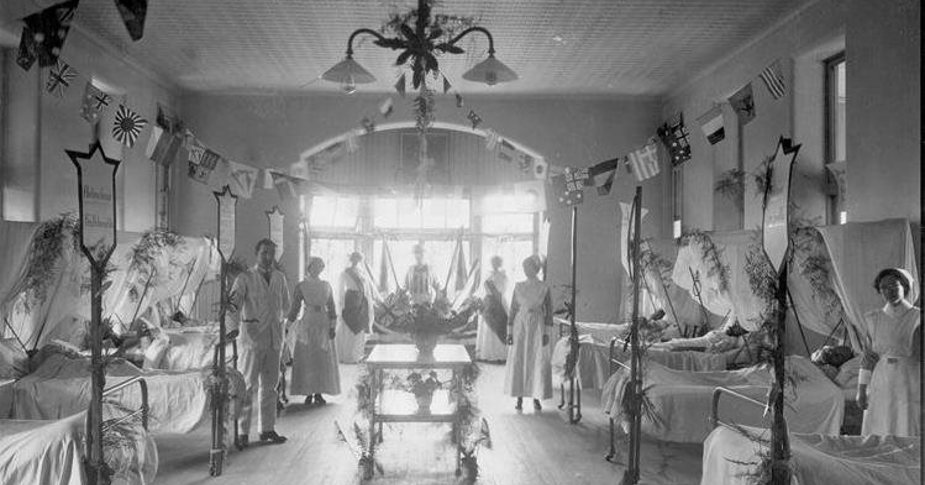Against a backdrop of war and the outbreak of the Spanish Influenza epidemic, Mater continues caring for Queenslanders.
In July 1912 the Mater Public Hospital outpatient department opened in its own purpose-built brick building. The service treated 1,440 people in its first six months. The influx was partly a result of the closure of the government’s South Brisbane ‘depot’ where needy people were able to access both medical care and other necessities.
Two years later in 1914, extensions to the surgical ward at Mater Public Hospital were completed, just in time to care for soldiers returning from World War I. Twenty beds were made available for soldiers as Mater worked to provide healthcare during a time of financial strain for Queenslanders.
Mother Patrick Potter said it was a time of ‘slender resources’ with public appeals for funding suspended during the war, and many Mater People away on war service.
However, by then Mater was a registered training school for nurses and the first 14 secular ‘probationers’ were studying to become nurses by 1914. With the completion of St Mary's Nurses Home staff quarters, Mater was working to ensure an adequate supply of nurses with appropriate qualifications.
In its first three years its operation, Mater Public Hospital provided care to more than 3,000 inpatients without any financial support from the government. The Sisters of Mercy set out to change this situation and, after much work, Mother Patrick Potter secured a £1,000 grant in June 1913.
By 1916, funding for the hospital came from private hospital patient fees, donations, government subsidies and community contributions.
The government’s annual £1000 subsidy eventually stretched to £2,000 but this meagre funding was stretched to its limit by the Spanish Flu.
St Laurence’s College, adjacent to Mater at South Brisbane, became a dedicated flu hospital during the outbreak.
Only three of Mater’s trainee nurses avoided the illness and the flu took a significant toll on hospital staff as well as Mater’s finances. Some relief came in 1920 when the State Labor Government announced that Mater Public Hospital would receive part proceeds from the Government’s Golden Casket Art Union on the same basis as other public hospitals.
It was in the midst of the Spanish Flu epidemic that Queensland’s first hospital laboratory was established at Mater by Dr J. Duhig and Sr Mary Chanel England. During the 1920s, the laboratory was essential in aiding diagnoses of the flu and many other conditions, prompting Sr Mary Chanel to highlight the importance of scientific work in healthcare.
She said while it is ‘costly and shows no immediate cash return’, medical science is worthy of ‘generous endowment.’
